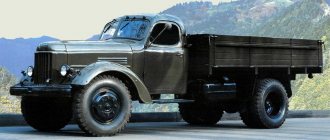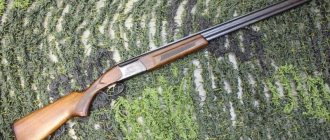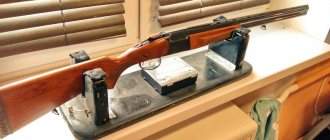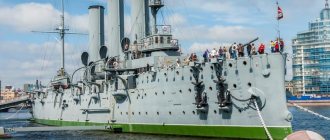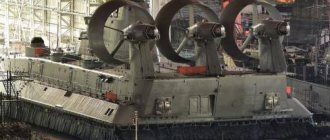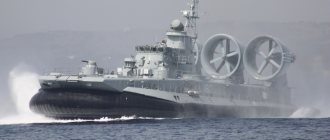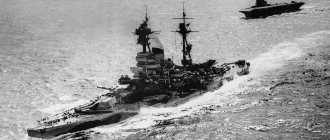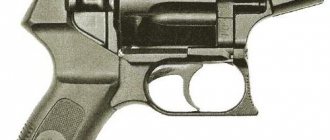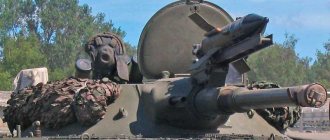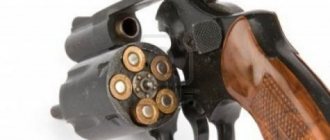Increasingly, lovers of blank weapons are thinking about the following questions before purchasing a blank Nagant:
- What Nagant deactivators exist (factory)?
- What are the advantages and disadvantages of each?
- Best (enjoyable) deactivator?
In our online store you can get answers to these questions, get advice, and purchase the following types of cold Nagan Revolver at the best price:
Nagant RNHT (Hammer Arms) (BUY!) Nagant R-412 (IzhMash) (BUY!) Nagant Izh-172 (IzhMekh) (check availability) Nagant VPO-526 (Hammer-weapon) (BUY!) Nagant SO 95/9 (TOZ) (BUY!)
Today, there are several samples of cooled Revolver Nagan pistols on the market - produced by Molot Arms, IzhMash, IzhMekh, Molot Oruzhie, and TOZ.
- Nagan system revolver, cold (VPO-526) 1941, 10x24
- Cooled revolver of the Nagan SO-95/9 (TOZ) system
- Revolver Nagan RNHT Chilled (ZiD, Hammer Arms)
- Cooled revolver of the Nagan R-412 system
According to the majority of owners of cold weapons, the Nagan RNHT “Hammer Arms” is the best option. He's on the same numbers. All factory marks are preserved, not polished, the best deactivator (two studs in the barrel, drum chambers are drilled to 10TK), removable drum. As they say, the rest need not be considered; a better deactivator has not yet been invented. But nevertheless, we will continue.
When working with a cold unit, a number of safety precautions must be followed. This is how a flame bursts out of the model’s barrel, and the imitation of a shot is accompanied by a noticeable sound signal. That is why pointing a revolver at people or animals is strictly prohibited.
The cold revolver will find its use both in educational activities and as a prop in film production or historical reconstructions.
The weapon is disassembled as usual without changes, so the model can be used as a training aid in military-patriotic clubs. The shot is accompanied by a strong sound effect. When shooting in confined spaces, it is recommended to use headphones and shooting glasses. They are purchased separately and are available in an assortment in our store.
The history of the creation of the Nagan-M traumatizer
In 1878, the first Nagan revolver appeared at the enterprise of two brothers in Belgium. The system has gone through a long process of improvement and operation. The weapon took part in two world wars and is still found as service equipment.
Revolver and 10X32 cartridges
It was decided to convert part of the 1985 issue into “traumas”. Two companies got down to business:
- IzhMash;
- Hammer.
The first one began production much earlier and by the time its rival appeared on the market it was well tested. Structurally, it had several shortcomings that could be eliminated on our own without much difficulty. The product was named “Naganych”.
IzhMash began assembling traumatic revolvers in 2008. The new product had a better build quality, however, it is difficult to call the two versions identical. The fact is that they are designed to use different cartridges. The Nagan-M does not allow firing two-bullet cartridges, since the second one gets stuck between the breech of the barrel and the drum.
Production of this weapon ceased in 2011.
Review of the Cold Revolver Nagan RNHT Hammer Arms
Revolver Nagan RNHT Chilled (ZiD, Hammer Arms)
The SHP-blown pistol Revolver Nagan RNHT is one of the most reliable of the decommissioned cold weapons from Hammer Arms. This is the very first Nagant Revolver that appeared on the weapons market. There are no complaints about this model, it works like a Kalashnikov assault rifle!! The Nagan revolver from the Molot-Arms company is a long-awaited new product among chp weapons, the Nagan Molot Arms revolver with the ability to fire blank cartridges of 10TK caliber from Tekhkrim. The sound of shooting from the chp Revolver Nagan Hammer Arms is like a combat one! Works great!! The Nagan revolver has been converted from a combat pistol into an SHP. Produced by the ZiD plant.
Cooled revolver of the Nagan RNHT system manufactured at the plant named after. Degtyareva. To simulate a shot from a Nagant, a 10TK caliber light-sound cartridge is used.
The body of the Nagan SH RNHT (ZiD) revolver is made of metal, its length is 220 mm, and its weight is 800 grams. The handle of the model is decorated with wooden plates, the texture of which ensures reliable grip of the revolver with the shooter’s hand. There is a swivel located on the lower part of the handle.
The delivery set for the cooled Nagan RNHT includes:
- revolver, decommissioned, cold;
- screwdriver blade;
- screwdriver handle;
- passport;
- package.
Deactive Cooled Nagant RNHT Hammer Arms:
The revolver's drum, like its combat counterpart, holds 7 rounds. To avoid the possibility of the model firing a live cartridge or throwing equipment, two pins are installed in the breech and muzzle of the barrel. At the same time, when simulating a shot from a revolver, a flame comes out of its barrel, so when working with the model, it is forbidden to point the revolver at people or animals.
The trigger mechanism of the Nagan SH RNHT (ZiD) model is double-action, which allows simulating firing both by self-cocking and by pre-cocking.
Characteristics of the cooled revolver Nagan SKH RNHT (ZiD)
- Combat analogue of the Nagan system revolver
- Dimensions (Length) 235 mm
- Caliber 10mm x 19mm
- Ammunition Blank cartridges 10 TK
- Load capacity 7 rounds
- Energy source Noise cartridge 10TK
- Material metal
- Delivery set Revolver, passport, packaging, screwdriver
A very pleasant deactivator with a minimum of interference in the design within the framework of the law of the Russian Federation. The best cooled Nagant Revolver on the market!!! It’s great that you can buy a Nagant Revolver pistol in a cold form, i.e. with a deactivator that does not allow firing a cartridge with a bullet (ammunition). But you can use a blank cartridge, as in the entire line of blank weapons, which can be bought from us in Moscow at low prices and with a large selection in one place. There are also very early “Tsarist” copies (check availability with managers).
- Revolver Nagan RNHT Chilled (ZiD, Hammer Arms)
55,000 ₽
Add to cart
Design Features
During development, the designers made a number of design changes, which made it possible to use a wider range of cartridges. This made it possible not only to increase functionality, but also to extend the certificate for the production of weapons. This is how the Nagan-M-01 appeared, firing two-bullet cartridges.
In the previous version, the second projectile jammed between the breech and the drum. During development, this effect could not be eliminated even in the second modification, but the frequency of the phenomenon decreased.
It is noteworthy that before the appearance of the new version, the revolver did not have a barrel; its function was performed by an simulator. The experience of creating similar structures allowed the developers to bypass the main disadvantage of such a guide - fragility. For example, a similar barrel of the Leader traumatic pistol could literally be bent with your hands. The Nagan has enlarged walls and uses higher quality metal, making it difficult to deform.
There are barriers inside the channel that do not allow firing with solid projectiles. The resulting clearance is quite large, which greatly affects accuracy when shooting. In fact, it is impossible to get a good aimed shot. However, it is also not possible to reduce the clearance to obtain higher ballistic characteristics. The fact is that this will increase the load of powder gases during a shot, which can lead to damage to the barrel or its premature wear.
Factory mark
The trigger mechanism is original, that is, it has not changed since combat use. Taking into account the design of the weapon, the traumatic revolver received a heavy cocking. This has the following consequences:
- an arbitrary shot is practically eliminated;
- you will have to get used to a heavy platoon;
- It is necessary to regularly clean the firing mechanism to avoid further complicating cocking.
The Nagant has an original, comfortable handle. Gun lovers for the most part believe that additional pads are not even necessary for comfortable use.
Review of the cooled pistol Nagan R-412
Cooled pistol Nagant R-412 is a cooled pistol created on .
Cooled revolver of the Nagan R-412 system
The legendary Nagan system revolver is decommissioned and deactivated, the deactivation of which was carried out in Izhevsk by the Baikal company. The cooled R-412 revolver is produced at the Izhevsk Mechanical Plant, which has been producing combat pistols since 1951. Full knowledge of the design and manufacturing features made it possible to deactivate this weapon in the most efficient way. As a result, the pistol has become available to a wide range of connoisseurs and the only restriction on its purchase is age. The revolver can be purchased by any adult citizen of the Russian Federation, without any permission or license . The model simulates firing with standard 10TK .
The first thing a potential buyer pays attention to is the price . The cooled Nagan R-412 pistol has it lower than the others.
The model's body is entirely made of durable weapon-grade steel, which ensures maximum structural reliability, since the material is designed even for heavy loads. To protect the metal from corrosion, bluing is applied to its surface.
Cooled revolver of the Nagan R-412 system
The length of the cooled R-412 revolver is 240 mm, and its weight is 850 grams. The sighting mechanism is represented by the front sight and the whole thing. The revolver handle is equipped with wooden plates. This all adds authenticity to the model.
The drum of the cooled unit is designed to hold 7 rounds , just like a real combat revolver. I would like to note that the revolver can be disassembled, which simplifies the process of servicing and repairing the model.
Features of deactivation of the revolver of the Nagan R-412 system
To ensure that the cold R-412 revolver could not be used to fire live ammunition, a number of changes were made to its design. So its drum has different chamber diameters on different sides, and the barrel inside is equipped with a divider that does not allow any solid objects to pass through it.
Cooled revolver of the Nagan R-412 system
Characteristics of the cooled revolver of the Nagan R-412 system
- Manufacturer Baikal (RF)
- Combat prototype Nagan system revolver
- Length(mm) 240
- Caliber(mm) 10mm x 19mm
- Type of ammunition 10TK
- Number of charges (pcs) 7
- Energy source blank cartridge
- Case/base material: metal
- Contents: pistol, passport, packaging
- Cooled revolver of the Nagan R-412 system
0 ₽
Add to cart
It is necessary to take into account that the P-412 pistols from this number represented at least the 2nd category of storage (used small arms that had partially exhausted their service life), although the vast majority of these revolvers can be safely attributed to the 2nd category (used small arms that have exhausted their service life and are not suitable for use without repair). That is, these are not pistols that have only traces of arsenal storage. These are genuine used pistols with signs of use. The weapon has a new look, but it is not new. The P412 pistols were sanded, plummeted and re-coated. The pistol frame is weakened in the area of the stand.
Performance characteristics
A number of technical characteristics are identical to the classic Nagant, which has been used by armed units for more than a century.
TTX:
| Characteristic: | Meaning: |
| Caliber, mm | 10 |
| Overall length, mm | 235 |
| Barrel length, mm | 114 |
| Height, mm | 130 |
| Drum width, mm | 40 |
| Unloaded weight, kg | 0,75 |
| Number of cartridges in the drum, pcs | 7 |
A special topic for discussion of this traumatic system is the cartridge. During the modification, it was possible to expand the functionality to two types of cartridges, however, this did not reduce the problems.
Cartridges and caliber
The 10X32TM cartridge is used for firing; the second modification uses 10X32T - two-bullet cartridges - with greater success (than the first).
The first ones are equipped with one bullet, however, they have low power. As a result, there is no talk of effective use against attackers dressed in warm clothes. The effect can only be achieved in warm weather, when people wear a minimum of clothing.
In addition, large gaps in the barrel eliminate high shooting accuracy. It is almost impossible to hit the target, and dispersion at a distance of more than 5 meters significantly increases the risk of a miss (from 2 meters the dispersion sector is 150 mm).
It is even more difficult to use two-bullet cartridges; jams occur even on the second modification of the revolver. In addition, the accuracy is even lower than that of 10X32TM. High spread can complicate the life of the defender himself. The fact is that even at close range, the second cartridge or the first can deviate so much that it hits the groin or neck, even though you are aiming, say, at the body. When considering the incident by the police, this state of affairs is regarded as a violation of defense rules.
Weapons in analysis
It is noted that the main problem with weapons is the cartridges. They have insufficient destructive power.
Dimensions, weight, length
Revolver dimensions: 235Х130Х40. For this class, the weight is quite small - only 750 grams when uncharged. Obviously, it was possible to reduce it at the cost of installing a lower-quality barrel.
With a full drum, 7 grams are added to the weight.
Store capacity
At the time of production, the drum held 7 rounds. In terms of ammunition, the Nagan-M is a clear leader, since no other traumatic weapon has such a number of charges.
Firing range and lethal force
The high dispersion is slightly compensated by the higher quality of the barrel itself. Due to the alloy and the enlarged wall, the risk of deformation is reduced.
It makes sense to fire from this weapon from no more than 5 meters, but even at such a distance there is a risk of missing. The fact is that the dispersion at a distance starts from 300 mm if a two-bullet cartridge is used.
The T cartridge has more muzzle energy - 90-100 J, however, this is too little to defeat the enemy.
A two-bullet cartridge is no better in this regard, since this energy reserve (about 90 J) is divided into two projectiles, which means each will be even weaker - no more than 45 J.
Pistol Walther P38, P1 and P4 (Germany)
The Walther "Armee pistole" or "AP" for short is the direct predecessor of the P38 pistol.
The Walther "Heeres Pistole" (abbreviated HP) is an early commercial version of the P38 pistol.
Walther P38 pistol manufactured in 1944.
Post-war army pistol Walther P1.
Walther P4 pistol, issued for the German police.
Walther P38K compact pistol, manufactured in the early 1980s.
Walther P38 pistol, partial disassembly.
Characteristics
| Walther P38, P1 | Walther P4 | |
| USM | double acting | |
| Caliber | 9x19 Luger/Parabellum | |
| Weight without cartridges | 840 g (with steel frame) 770 g (with aluminum frame) | 740 g |
| Length | 216 mm | 197 mm |
| Barrel length | 125 mm | 104 mm |
| Magazine capacity | 8 rounds | |
The P38 pistol was developed back in the second half of the thirties specifically as an army pistol. Heeres Pistole) in 1938
, that is, an army pistol), in 1940 this pistol, under the official designation
Pistole 38
, was adopted by the Wehrmacht and was widely used during the Second World War. The production of P38 pistols continued immediately after the end of the war in 1945-46, from military stocks, and was carried out under the supervision of the French occupation authorities. In the mid-1950s, the Carl Walther company began to rise from its post-war ruins. The production of PP and RRK pistols, and a little later the P38, was established in France by Manurhin under license from Walther, and in the late 1950s the company resumed production of P38 pistols for the commercial market, as well as for the needs of the newly created armed forces of Germany. At the same time, compared to military pistols, there were minor differences due to the technological features of the new production. In 1957, the Bundeswehr adopted the P1 pistol, which differed from the first P38 only in its aluminum frame. At the same time, the commercial version of the same pistol was still called P38. Production of commercial steel frame P38 pistols in the post-war period was fairly small. In 1975, a reinforcing hexagonal cross-section rod was introduced into the design of the P1/P38 pistols, located in a frame in the area where the barrel locking cylinder is located. In the early 1970s, to unify and modernize the very diverse fleet of pistols of the German police, the P4 pistol was developed and approved for use, which was a modification of the P1/P38 pistol with a shortened barrel and a modified safety mechanism. P4 pistols remained in production until 1981, being supplanted by the more advanced Walther P5 model. Interestingly, some production P4 pistols were marked "P38 IV" rather than "P4", which suggests that they were converted from regular P38 pistols. Somewhat later, an even shorter-barreled version of the R38K was created specifically for concealed carry by employees of the anti-terrorist units of the Federal Republic of Germany, which had a barrel only 90 mm long, barely protruding forward from the short bolt casing. The P38K pistol was produced in small quantities and was used by fighters of the famous anti-terrorist unit KSK. This shortened version had significant similarities with a similar modification of the P38 pistol, produced in very small quantities for the Gestapo during the Second World War. Visually, the post-war P38K differed from the “Gestapo” version in the location of the front sight - on post-war pistols the front sight was located on the bolt, while on military pistols it was on a shortened barrel, close to the front edge of the bolt. The last commercial P38 pistols were released by Walther in 2000. Pistols of the P38 series as a whole were quite good and, in their way, a milestone weapon, but in the Bundeswehr, P1 pistols earned the contemptuous definition of “8 warning shots plus one aimed shot,” and in German tests on a police pistol in the mid-1970s, neither P38 nor P4 did not pass the reliability test. In addition, these pistols were distinguished by a typically German love of complexity - for example, in the design of the P38 pistol there were 11 springs, mostly small, while in the design of its predecessor, the Luger P08 “Parabellum” pistol there were only 8 springs, and in the design of the Tokarev pistol There are even fewer TTs - only 6. Especially for training shooters, Walther produced a version of the P38 pistol chambered for a small-caliber 5.6mm rimfire cartridge (.22LR). This version had automatic blowback action. In addition, conversion kits were produced to adapt conventional 9mm P38 pistols to a cheap small-caliber cartridge. These kits included a replacement barrel, bolt, recoil springs, and magazine.
Walther P38 is a self-loading pistol with a self-cocking hammer trigger (double action). The automatic operation of the pistol is built according to a scheme using recoil energy with a short barrel stroke. The coupling of the barrel and the bolt is carried out by a special larva located under the barrel and swinging in a vertical plane. When fired, the barrel and the bolt move back a few millimeters. Then the larva “bumps” into the pistol frame and falls down, disengaging from the bolt. The barrel with the cylinder fixed underneath stops, and the bolt continues its movement back, performing a full cycle of reloading the weapon. The pistol has a distinctive appearance due to the short bolt with a large window on top. Another distinctive feature of the pistol design is the presence of two return springs located on the sides of the frame under the bolt. On the back side of the bolt, above the open trigger, there is an indicator of the presence of a cartridge in the chamber in the form of a rod protruding back when the weapon is loaded. The fuse is located on the left side of the bolt; the slide stop latch is located on the frame under the fuse. When the safety is turned on, the firing pin is locked and retracted from the hammer, after which the hammer is safely released from cocking. Pistols of the P4 series had modified safety devices; the lever on the bolt performed only the function of safely releasing the trigger, without blocking the trigger, and automatically returning to the “fire” position after pressing. Additionally, the P4 had an automatic safety lock that blocked the firing pin until the trigger was pressed. In the front part of the frame on the left there is a latch for disassembling the pistol. An interesting feature of the P38 design (later inherited from the Beretta 92 pistol, along with the locking scheme) is that the trigger rod is located outside the frame, on the right side of the weapon. The cheeks of the handle are made of black or brown plastic, the magazine latch is made on the heel of the handle. The sight is constant.
Instructions for safe use
The requirements for safe use are traditional for traumatic weapons of revolvers in general.
Safety precautions:
- do not use cartridges of a different caliber;
- store the pistol unloaded;
- do not aim at a person unless there is a need to defend yourself;
- when shooting, the arm must be extended;
- store in places inaccessible to unauthorized persons;
- Do not use a damaged gun.
With the caliber everything is obvious, even if a smaller bullet works, the spread from the ball dangling in the barrel will be too large. The idea of using foreign solid objects as bullets should also be abandoned. This is the easiest way to damage the barrel, even to the point of breaking it, which can also be dangerous for the shooter.
Cartridges T and TM
During storage, the weapon should not be cocked; all bullets should be removed from the drum before storage. Even in this form, the revolver must have the safety on.
Playing with such things is very dangerous; an accidental shot can cause serious injury.
The hand with the weapon must be extended when shooting. This is important to keep the attacker at a distance and to prevent any unintended situations.
The revolver should not be used by persons who do not have the appropriate permit and ownership. For maximum protection, you need to have a safe; even a regular one will do. The key should be kept in a place unknown to outsiders, and the password should not be shared with anyone.
A faulty weapon can be dangerous, for example, a deformed barrel will cause it to rupture and cause injury. If defects, breakdowns, or malfunctions are found, they must be eliminated before shooting.
It is useful to accustom yourself to the idea that the weapon is always loaded and ready to fire. This will eliminate frivolity in relation to injuries and others.
Advantages and disadvantages
Among the advantages of the model, one can highlight the almost complete identity of the historical form. This is highly valued by those who purchase a revolver not for defense, but for collection.
The design turned out to be quite reliable and convenient.
Poor defensive qualities do not allow this weapon to be regarded as an effective weapon. The performance could be improved by installing a thicker barrel and changing the caliber to a more powerful one.
Drum
At the same time, Nagan-M is not the worst example of trauma. For example, it significantly surpassed the Leader in accuracy and destructive power.
In general, for wearing and using for its intended purpose, it is worth looking at more powerful specimens. But the brainchild of “Hammer” will look great in the collection.
Price on the market or online
Since the production of the traumatum ceased almost a decade ago, it is almost impossible to find it new. However, it is not so difficult to buy someone back, and the price for a traumatic revolver pistol will be relatively low.
It is important to look at the condition when purchasing so that repairs do not cover the savings. First of all, you need to pay attention to the barrel, the main thing is that there are no defects, bends, cracks, signs of impacts or falls.
You should immediately pay attention to the mechanism; if it has not been cared for well, it will become dirty. If there are traces of gun oil, then this is, on the contrary, a good sign.
